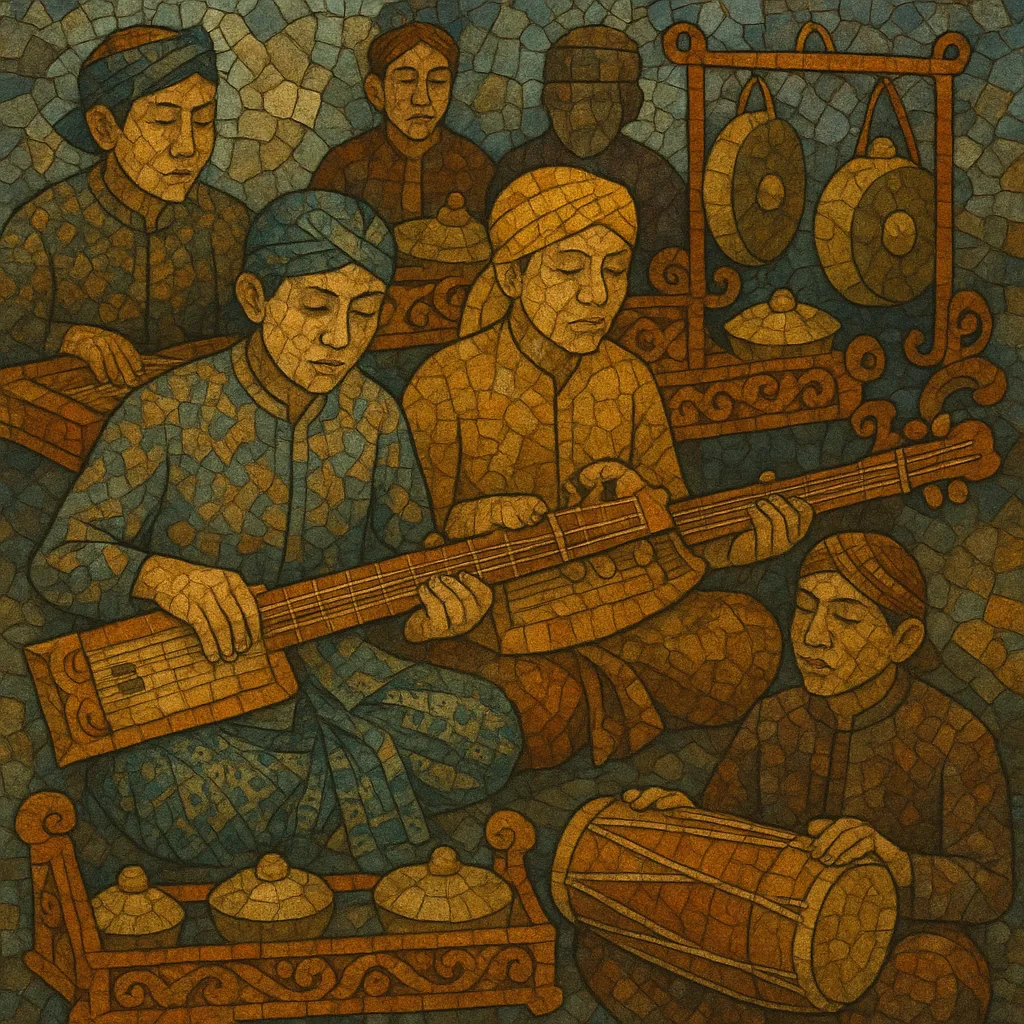Gamelan siteran is a chamber-style, portable variant of Javanese gamelan that centers on plucked zithers—especially the siter and celempung—in place of large bronze-keyed metallophones and gongs.
The ensemble typically plays in the Javanese sléndro and pélog tuning systems, maintaining the cyclical, colotomic structures and stratified heterophony of court gamelan while producing a softer, more intimate sound. Rhythmic punctuation that would normally be carried by large gongs is suggested with small gong surrogates (often bamboo or small metal gongs), wooden blocks, or hand percussion, while a kendhang (drum) leads tempo and changes of irama (tempo-density level).
Historically performed in homes, small pavilions, and community gatherings, gamelan siteran supports both instrumental pieces and vocal genres (sindhenan/gerongan), offering a delicate, lyrical texture suitable for social music-making and teaching.
Gamelan siteran arose in Central Java as a portable, domestically oriented offshoot of courtly Javanese gamelan. By the early 20th century, musicians adapted the core aesthetics of palace ensembles to smaller settings by substituting plucked zithers (siter, celempung) and other lightweight instruments for heavy bronze keys and large gongs. This allowed households, neighborhood groups, and students to rehearse and perform without access to a full court set.
While retaining the sléndro and pélog tuning systems, siteran ensembles emphasize plucked-string timbres and soft-sounding instruments such as suling (bamboo flute) and occasional rebab (spike fiddle). Colotomic punctuation is indicated with small gongs or bamboo resonators rather than the full gong ageng family. The kendhang still leads tempo and irama changes, and melodic elaboration follows Javanese concepts of cengkok (melodic patterns) and sekaran (ornamental figures).
Because of its portability and intimate volume, gamelan siteran has been used for house gatherings, informal teaching, community events, and light entertainment. Repertoire ranges from instrumental forms (e.g., ketawang, ladrang, lancaran) to vocal pieces accompanied by sindhen (female soloist) and male chorus (gerong), often adapted to the reduced forces while preserving pathet-based modal practice.
With the rise of radio and later educational institutions, siteran practice spread beyond palace circles into schools and community arts programs. Archival and field recordings from the late 20th century helped document regional variants, and contemporary karawitan departments in Indonesian arts institutes continue to maintain and teach siteran as part of the broader Javanese gamelan tradition.


